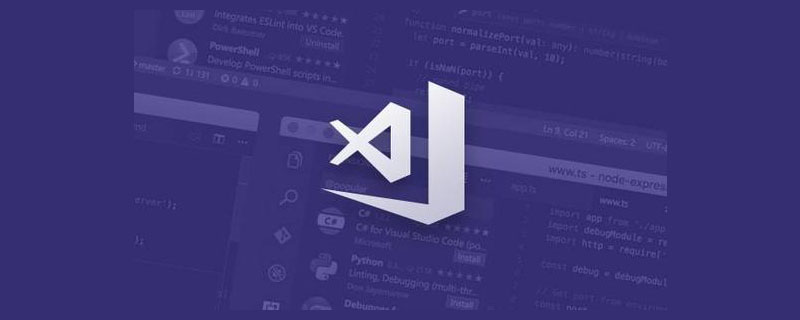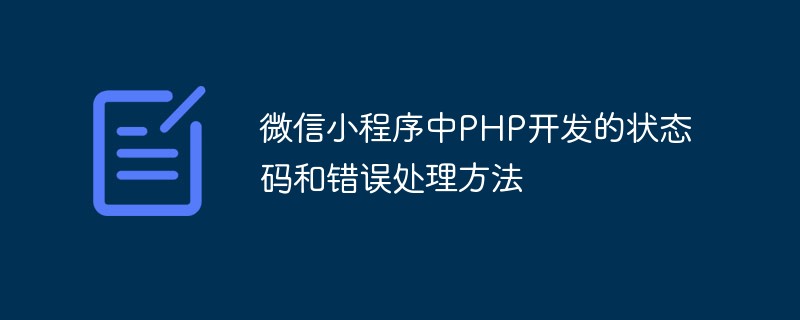 Backend Development
Backend Development PHP Tutorial
PHP Tutorial How to use PHP to develop the automatic reply rule management function of public accounts
How to use PHP to develop the automatic reply rule management function of public accounts
How to use PHP to develop the automatic reply rule management function of public accounts
With the popularity of WeChat public accounts, many companies and individuals have begun to understand and use WeChat public accounts . The WeChat official account provides a rich functional interface, among which the automatic reply rule management function is a very important function. This article will introduce how to use PHP to develop the automatic reply rule management function of public accounts and provide specific code examples.
First of all, we need to understand some basic concepts of the automatic reply rule management function of WeChat public accounts. On the backend management page of the WeChat official account, we can set custom menus and keyword automatic reply rules.
Custom menu means that when a user clicks on the menu after following the official account, the official account will respond accordingly according to the settings of the menu. Custom menus can be divided into first-level menus and second-level menus. Each menu item can be set to trigger an event after being clicked, which can be a reply message, a jump link, or an interface call, etc.
Keyword automatic reply rules mean that when a user sends a message containing a certain keyword, the official account will reply according to the set reply rules. Keywords can be text, pictures, links, etc. Reply rules can be replying to fixed messages, replying to random messages, or calling interfaces, etc.
Next, we will start to introduce in detail how to use PHP to develop the automatic reply rule management function of public accounts.
First, we need to prepare a PHP development environment, including a web server (such as Apache or Nginx), PHP parser and MySQL database. In this environment, we can use PHP to develop web applications, handle requests from the WeChat server, and respond accordingly.
Next, we need to obtain the AppID and AppSecret of the WeChat official account. We can apply for a developer account on the WeChat public platform and create a public account. In the settings of the official account, we can find the AppID and AppSecret.
Next, we need to configure the server address and Token in the developer tools of the WeChat public platform. The server address is the address of the web server we built ourselves, and the Token is a string used to verify the identity between the WeChat server and our own server. After the configuration is completed, click Confirm and save the Token, which we will need when writing code.
Next, we can start writing PHP code. First, create a file named wechat.php and write the following code in the file:
<?php
define("TOKEN", "YOUR_TOKEN");
$wechatObj = new wechatCallbackAPI();
$wechatObj->valid();
class wechatCallbackAPI
{
public function valid()
{
$echoStr = $_GET["echostr"];
if($this->checkSignature()){
echo $echoStr;
exit;
}
}
private function checkSignature()
{
$signature = $_GET["signature"];
$timestamp = $_GET["timestamp"];
$nonce = $_GET["nonce"];
$token = TOKEN;
$tmpArr = array($token, $timestamp, $nonce);
sort($tmpArr);
$tmpStr = implode( $tmpArr );
$tmpStr = sha1( $tmpStr );
if( $tmpStr == $signature ){
return true;
}else{
return false;
}
}
}In the above code, we first define a constant TOKEN to store our data in the WeChat developer tools Configured Token. Next, we created a class named wechatCallbackAPI and defined two methods, valid() and checkSignature() in the class.
valid() method is used to verify the identity between the WeChat server and our own server, and return the verification result. In the method, we first obtain the echostr parameter passed by the WeChat server and save it in the $echoStr variable. Then, call the checkSignature() method for authentication. If the verification passes, $echoStr is output to the client and the execution of the program is terminated.
The checkSignature() method is used to verify whether the parameters passed by the WeChat server are valid. First, we obtain the signature, timestamp and nonce parameters passed by the WeChat server and save them into the corresponding variables. Then, sort the TOKEN, timestamp and nonce in lexicographic order and use the SHA1 algorithm for encryption. Finally, the encrypted string is compared with the signature passed by the WeChat server. If they are equal, the verification passes, otherwise the verification fails.
Next, we can write the code for automatic replies. For the sake of simplicity, here we only implement the keyword automatic reply function. In the wechat.php file, add the following code:
<?php
// 省略上面的代码
class wechatCallbackAPI
{
// 省略上面的代码
public function responseMsg()
{
// 获取微信服务器POST过来的XML数据
$postStr = $GLOBALS["HTTP_RAW_POST_DATA"];
if (!empty($postStr)){
$postObj = simplexml_load_string($postStr, 'SimpleXMLElement', LIBXML_NOCDATA);
$fromUsername = $postObj->FromUserName;
$toUsername = $postObj->ToUserName;
$content = trim($postObj->Content);
$time = time();
if ($content == "你好"){
$textTpl = "<xml>
";
$textTpl .= "<ToUserName><![CDATA[%s]]></ToUserName>
";
$textTpl .= "<FromUserName><![CDATA[%s]]></FromUserName>
";
$textTpl .= "<CreateTime>%s</CreateTime>
";
$textTpl .= "<MsgType><![CDATA[text]]></MsgType>
";
$textTpl .= "<Content><![CDATA[%s]]></Content>
";
$textTpl .= "</xml>";
$msgType = "text";
$replyContent = "你好!欢迎关注我的公众号!";
$resultStr = sprintf($textTpl, $fromUsername, $toUsername, $time, $replyContent);
echo $resultStr;
} else {
echo "success";
}
}else {
echo "success";
exit;
}
}
}
$wechatObj = new wechatCallbackAPI();
$wechatObj->valid();
$wechatObj->responseMsg();
In the above code, we added a method named responseMsg() in the wechatCallbackAPI class (used to process user messages). In the method, we first obtain the XML data POST from the WeChat server and save it to the $postStr variable. Then, the XML data is converted into a SimpleXMLElement object through the simplexml_load_string() function and saved into a variable with the corresponding node value.
Here, we use the keyword automatic reply function as an example. If the content of the message sent by the user is "Hello", the official account will reply "Hello! Welcome to follow my official account!", otherwise no reply will be made.
Finally, we created a $wechatObj object at the end of the wechat.php file, and called the valid() and responseMsg() methods in sequence to complete the authentication between the WeChat server and our own server, and Handle user messages.
So far, we have completed the code writing of using PHP to develop the automatic reply rule management function of public accounts. Next, we can deploy the wechat.php file to our web server and configure the server address and Token in the WeChat public platform to test whether our code is valid.
To sum up, this article introduces how to use PHP to develop the automatic reply rule management function of public accounts and provides specific code examples. I hope to be helpful.
The above is the detailed content of How to use PHP to develop the automatic reply rule management function of public accounts. For more information, please follow other related articles on the PHP Chinese website!
 微信小程序中PHP开发的翻页特效实现方法Jun 01, 2023 pm 01:51 PM
微信小程序中PHP开发的翻页特效实现方法Jun 01, 2023 pm 01:51 PM在微信小程序中,PHP开发的翻页特效是非常常见的功能。通过这种特效,用户可以轻松地在不同的页面之间进行切换,浏览更多的内容。在本文中,我们将介绍如何使用PHP来实现微信小程序中的翻页特效。我们将会讲解一些基本的PHP知识和技巧,以及一些实际的代码示例。理解基本的PHP语言知识在PHP中,我们经常会用到IF/ELSE语句、循环结构,以及函数等一些基本语言知识。
 微信小程序中PHP开发的常用工具库介绍Jun 01, 2023 pm 07:40 PM
微信小程序中PHP开发的常用工具库介绍Jun 01, 2023 pm 07:40 PM随着微信小程序的普及和发展,越来越多的开发者开始涉足其中。而PHP作为一种后端技术的代表,也在小程序中得到了广泛的运用。在小程序的开发中,PHP常用工具库也是很重要的一个部分。本文将介绍几款比较实用的PHP常用工具库,供大家参考。一、EasyWeChatEasyWeChat是一个开源的微信开发工具库,用于快速开发微信应用。它提供了一些常用的微信接口,如微信公
 如何利用PHP开发商城的满额赠礼功能May 22, 2023 am 10:02 AM
如何利用PHP开发商城的满额赠礼功能May 22, 2023 am 10:02 AM网上购物已经成为人们日常生活中不可或缺的一部分,因此,越来越多的企业开始关注电商领域。开发一款实用、易用的商城网站也成为了企业提高销售额、拓展市场的必要手段之一。在商城网站中,满额赠礼功能是提高用户购买欲望和促进销售增长的重要功能之一。本文将探讨如何利用PHP开发商城的满额赠礼功能。一、满额赠礼功能的实现思路在商城开发中,如何实现满额赠礼功能呢?简单来说就是
 微信小程序中PHP开发的加密和解密实现方法Jun 01, 2023 am 08:12 AM
微信小程序中PHP开发的加密和解密实现方法Jun 01, 2023 am 08:12 AM随着微信小程序在移动应用市场中越来越流行,它的开发也受到越来越多的关注。在小程序中,PHP作为一种常用的后端语言,经常用于处理敏感数据的加密和解密。本文将介绍在微信小程序中如何使用PHP实现加密和解密。一、什么是加密和解密?加密是将敏感数据转换为不可读的形式,以确保数据在传输过程中不被窃取或篡改。解密是将加密数据还原为原始数据。在小程序中,加密和解密通常包括
 PHP开发中提供效率的VSCode插件推荐(值得收藏)Mar 30, 2021 pm 07:31 PM
PHP开发中提供效率的VSCode插件推荐(值得收藏)Mar 30, 2021 pm 07:31 PM本篇文章给大家推荐一些VSCode+PHP开发中实用的插件。有一定的参考价值,有需要的朋友可以参考一下,希望对大家有所帮助。
 微信小程序中PHP开发的状态码和错误处理方法May 31, 2023 pm 07:52 PM
微信小程序中PHP开发的状态码和错误处理方法May 31, 2023 pm 07:52 PM作为目前最流行的社交媒体平台之一,微信已经成为了企业和个人互动沟通的重要渠道之一。而微信小程序则更加方便用户使用和开发者创新。在小程序开发中,PHP是一种重要的后端技术,但是在开发过程中很容易出现状态码和错误处理方面的问题。本文将介绍微信小程序中PHP开发的各种状态码和错误处理方法。一、微信小程序中的状态码在微信小程序中,HTTP状态码(HTTPStatu
 微信小程序中PHP开发的文本框自动完成功能实现方法Jun 01, 2023 pm 07:42 PM
微信小程序中PHP开发的文本框自动完成功能实现方法Jun 01, 2023 pm 07:42 PM随着微信小程序的普及,各类开发需求也日渐增多。其中,文本框自动完成功能是小程序中常用的功能之一。虽然微信小程序提供了一些原生的组件,但是有一些特殊需求还是需要进行二次开发。本文将介绍如何使用PHP语言实现微信小程序中文本框自动完成功能。准备工作在开始开发之前,需要准备一些基本的环境和工具。首先,需要安装好PHP环境。其次,需要在微信小程序后台获取到自己的Ap
 微信小程序中PHP开发的滑动验证码实现方式Jun 01, 2023 pm 09:01 PM
微信小程序中PHP开发的滑动验证码实现方式Jun 01, 2023 pm 09:01 PM随着互联网的快速发展,网络安全问题也变得越来越严峻。针对恶意攻击、刷单等安全威胁,很多网站和应用程序都使用了验证码来保护用户信息和系统安全。在微信小程序中,如何实现一个安全可靠的滑动验证码呢?本文将介绍使用PHP开发的滑动验证码实现方式。一、滑动验证码的原理滑动验证码是指在验证用户身份时,通过用户在滑块上滑动完成验证过程。其原理是将一张图片分成两部分,一部分


Hot AI Tools

Undresser.AI Undress
AI-powered app for creating realistic nude photos

AI Clothes Remover
Online AI tool for removing clothes from photos.

Undress AI Tool
Undress images for free

Clothoff.io
AI clothes remover

AI Hentai Generator
Generate AI Hentai for free.

Hot Article

Hot Tools

SublimeText3 Linux new version
SublimeText3 Linux latest version

Notepad++7.3.1
Easy-to-use and free code editor

Atom editor mac version download
The most popular open source editor

WebStorm Mac version
Useful JavaScript development tools

ZendStudio 13.5.1 Mac
Powerful PHP integrated development environment





